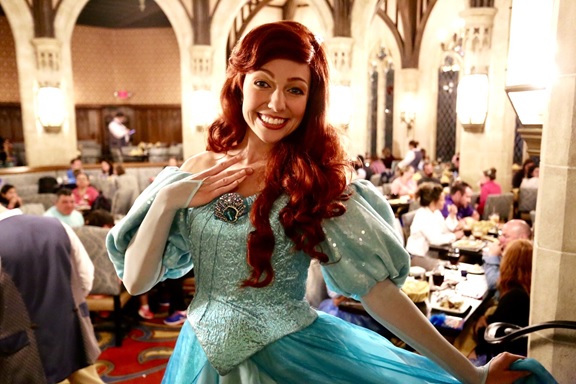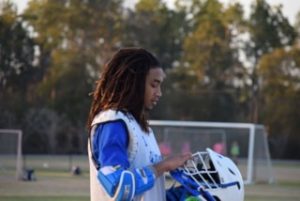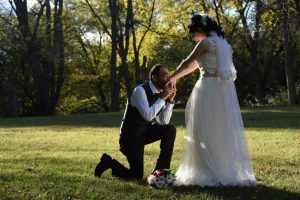By Jacob Hancock
Wayne Guthrie is the owner of Outerbanks Seafood in Beaufort, N.C. Everyone in town who enjoys eating good shrimp – that is, most everyone – knows “Mr. Wayne.” He’s a busy man, always talking with someone who wants fresh, local seafood, and he does his best to keep up with the news.
“I try to read the paper every day, and I watch CNN,” Guthrie said.
But he doesn’t trust the media.
“They just don’t understand a lot of what they’re talking about,” Guthrie said. “They don’t always have the facts. They publish what they hear instead of what they know.”
Guthrie isn’t alone. Natalie Gibble said she isn’t confident in a lot of the media content that she gets each day.
“My momma always told me to believe nothing that you hear, and only half of what you see. I’m skeptical,” Gibble said of news media, “because they often have a bias, and they make mistakes on all kinds of things.”
Public confidence in the media has reached a new low, according to a Gallup poll taken in September. Only 32 percent of Americans say they have “a great deal” or “a fair amount of trust” in the media. Among republicans, who traditionally distrust the media more than democrats and independents, only 14 percent say they have confidence in news outlets.
Carteret County, with Beaufort at its heart, is the most Republican-dominated County in all of Eastern North Carolina, and it’s where I was raised. Everybody knows each other, and rumors travel faster than the trucks that gun it out of the parking lot after the school bell rings. People still buy the local paper, the Carteret County News-Times, though many call it the “Mullet Wrapper,” because they’d rather use it to package fish than as a news source.
This environment presents problems for local journalists, some of whom were born and raised in Carteret County. At times, it can be frustration boils up for both the reporters and within the community.
Concern
It’s November. I’m scrolling through my Facebook feed and see a headline that reads: “Clinton Campaign Paid Beyoncé and Jay Z $62 Million for Cleveland Concert to Secure Black Votes.” I click on it and it takes me to EndingTheFed.com. I decide to copy and paste the headline into a search engine, and dozens of articles come up from various websites, but none of them are traditional media outlets. They are websites with titles like NewsBreaksHere.com, TheAfricanSpear.com, or AmericansNews.online, and much of their content, including this article, is false.
But that didn’t stop 11 of my Facebook friends from Carteret County from liking and sharing the article.
“She is despicable!” one post reads. A commenter replies, “Sounds about right!!!”
Beth Blake, managing editor of the News-Times, said she’s concerned by how readily people accept content from fake news websites as true.
“It’s disconcerting that people aren’t asking questions when they see these articles,” Blake said. “Some of the things I’ve seen shared on Facebook are just ridiculous, but people believe them.”
Blake recalled a story that she saw during the election season that said Pope Francis had endorsed Donald Trump. It would be odd for the pope to publicly endorse a candidate, and even more odd to endorse Trump considering Pope Francis has been considered liberal on social issues.
“I saw that and right away I knew that it wasn’t true,” Blake said. “But somebody I’m friends with thought that it was legitimate and wanted to share it with all of their friends. It’s kind of scary.”
Jackie Starkey is a government and politics reporter at the News-Times. She said she feels like many people believe fake news articles because it reinforces their own beliefs.
“Everyone wants to feel like they’re always right,” Starkey said. “They’re looking to read something that confirms what they already believe, and if it doesn’t then they tend to lose interest. That can make things problematic for us.”
Frustration
Guthrie, like 70 percent of voters in Carteret County, voted for Donald Trump in the election this fall. One of Guthrie’s biggest complaints about the media was his perception of bias, especially against President Trump.
“They’re constantly on his case,” Guthrie said. “Every day it’s something new. They were never this hard on Obama.”
Many Carteret voters agree. Starkey thinks that attitude seems to persist throughout rural areas in the United States.
“There’s a lot of animosity towards the establishment,” Starkey said. “I think that’s pretty evident considering the recent election.”
Students from West Carteret High School traveled to Washington D.C. to attend Trump’s inauguration. Before they left, Starkey wrote about the trip, using it to describe controversies surrounding Trump’s campaign and the assembly of his administration. She mentioned that the inauguration signified the beginning of one historic era and the end of another. She alluded to President Obama’s accomplishments as America’s first black president.
“It wasn’t even a big part of the story, but it definitely rubbed a lot of people the wrong way,” Starkey said. “If you’re not pissing people off, you’re probably doing something wrong though.”
If you throw a rock in Carteret County, you’re bound to hit a Republican. It can be very difficult to provide evenhanded news when readership is so right-side dominant.
“It runs pretty red here,” Starkey said. “That can make it tough to provide balanced content, and frankly, a lot of people aren’t always looking to read balanced content.”
Community ties
J.J. Smith is the News-Times’ sports reporter. He was born and raised in Atlantic, N.C., and graduated from East Carteret High School. Smith mostly reports on high school athletics in the county. The East Carteret Mariner’s varsity boys’ basketball team is one of the area’s most successful programs, having won seven consecutive conference championships. They went undefeated in the 2013-2014 season before losing in the NCHSAA 1A Championship game to Winston-Salem Preparatory Academy. East came back to beat Winston-Salem in the championship the following season. Smith said that he often catches a lot of flak from people in the community because his alma mater tends to dominate the press during the winter.
“Some of the coaches at the other high schools like to call me ‘Mickey Mariner,’” Smith said with a chuckle. “But it’s kind of hard not to write about them when they’re having so much success. People want to keep up with East basketball.”
Smith said that, as a sports reporter, he feels pretty insulated from most of the criticism that political journalists receive.
“Sometimes I almost feel like more of a cheerleader than a reporter,” Smith said.
However, he did recall one time a critic got under his skin. A student from a competing high school tweeted that Smith would get sexual gratification from writing about another East Carteret state championship.
“I didn’t really appreciate that one,” Smith said. “I enjoy seeing all of the county teams thrive.”
Smith said that he is passionate about his job, he enjoys working in the community he grew up in and yet he definitely feels being a reporter in your hometown can be challenging.
“I can count the negative things I’ve written on one hand, but it definitely gets to be a problem if you’re writing about politics or education,” Smith said. “You have to be careful because the people you’re writing about are the people that you’re going to sit next to in church, or people that you’ve grown up with your entire life.”
Jackie Starkey did not grow up in Carteret County.
“I always feel like an outsider,” Starkey said. “But I think that’s a good thing. I have fresh eyes. I’m always bringing a fresh, new perspective. I think it makes things easier.”
But being an outsider has its disadvantages.
“Sometimes it can be hard when I’m doing a story and trying to set up interviews,” Starkey said, “And someone says ‘you should talk to so-and-so,’ and I have no idea who they are. And sometimes people might be more hesitant to talk simply because they don’t really know me.”
Hope
Blake has been working in the news industry since 1979 and she believes that this is a crucial time for the newspaper.
“Our role is more important now than ever,” Blake said. “It is imperative to have community journalists that are reporting on everything from government, to education, to business, to sports. The people have a fundamental right to know what’s going on.”
Asked what she would tell an aspiring journalist who may feel discouraged by the public’s lack of trust in the media, Blake said it’s important to study American History.
“The American media has been under attack forever,” Blake said. “It’s nothing new. You have to have a thick skin and just know that you’re serving the public.”
Blake said that she believes a critical public makes the media better.
“We are aware that people are doubting us,” Blake said. “That just makes us work even harder. We want to make sure that everything we publish has a solid factual background. We work harder to make sure that every fact has been checked. We want to get it right.”
Jackie Starkey said that even though she may receive criticism, she feels that she’s appreciated as a local journalist.
“They may not be a fan, but people are respectful,” Starkey said. “They see the value in having someone reporting on local government, and they respect me even though they may not always like me.”
Gibble says that while she may not always trust the media, she does have respect for journalists
“I don’t think that most journalists are bad people,” Gibble said. “I think they have a really tough job, especially now with how divisive everyone is. It’s not a job that I would want to have to do, that’s for sure.”
Asked whether or not they think the media can mend its relationship with the public, Gibble and Starkey gave the same answer.
“I sure hope so.”
Ed. by Jordan Wilkie






